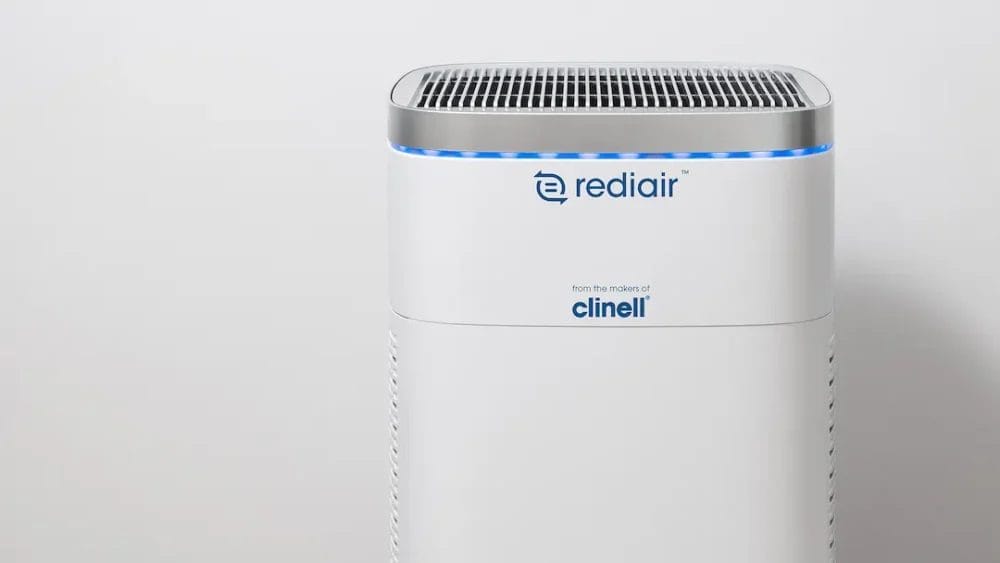Posted
3rd February 2022
Products
In this week’s article, we discuss the factors you should consider when choosing an air filter for a healthcare setting. From HEPA filters to built in particle sensors, we demystify the confusion surrounding air filtration units.
Air filtration units have attracted significant attention with hospitals, offices, GPs and schools, all purchasing units to try and reduce transmission of harmful pathogens such as SARS-CoV-2.But do they work? Will they protect our patients and healthcare workers from airborne viruses, and what are the considerations when choosing an air purifier for the healthcare setting?

In our previous blog post “Why ventilation is important & the role of air filtration units“, we discussed the role of ventilation in reducing the risk of the transmission of infectious microorganisms. We also discussed some of the emerging evidence around the role of air filtration units in reducing transmission of pathogens like SARS-CoV-2.
Considerations for choosing an air filter
Features and functions to consider when choosing an appropriate air filter can be confusing, as procurement and infection prevention and control teams come to terms with the language and norms associated with air purification systems. Ultimately, the filtering efficiency will depend on the air purifier’s power, filtering capacity, and the space volume in the room. However, many other aspects warrant consideration. Below we explore some of the terminology associated with air filtration units.
Filters
Ensure the unit contains genuine HEPA filters and not HEPA-like filters. HEPA stands for High Efficiency Particulate Air. HEPA H13 – H14 are considered medical-grade quality, filtering a minimum of 99.97% particles @ 0.3 microns.
The addition of pre-filters protect and prolong the life of the HEPA filters, and carbon or charcoal filters reduce unwanted odours and Volatile Organic Compounds (VOCs). Filters must be changed according to facility Infection Prevention policies, but an air purifier unit with a Change of Filter notification system will aid timely removal and replacement.
Visit our Rediair page for more information.

Clean Air Delivery Rate (CADR)
Expressed in cubic metres per hour (m3/hr), CADR is an industry-standard measure of the air volume that the air purifier can clean. The higher the number, the more effective. An air filter with high and variable flow rate options will ensure adequate air changes/hour.
Particle sensor
Built-in particle or air quality sensors indicates air quality within the room. The amount of PM2.5 in the air is a key indicator of air quality. PM stands for particulate matter, and 2.5 refers to size (2.5 micrometres). As the unit cleans the air, the level of improvement can be observed using a numerical or colour-coded monitor function. Units with an auto-mode will adjust the speed of the motor automatically according to air quality.


Airflow
Multiple and larger intake vents provide efficient air entry to the filtering system. Ensure inlets and outlet vents are unobstructed when placing the unit within a room.
Patient comfort
Noise levels, measured in decibels (dB), is a significant consideration when used in a patient room. Look for a product that provides both minimum and maximum noise levels, reflective of low or high fan settings. A night mode function cuts the lights and the noise to give patients a chance to rest and recover.
Ease of use, easy to clean
Are the pre-filters easy to remove and clean? Are the HEPA filters easy to replace? Look for a unit that can be easily moved around the room and placed in the most appropriate position. Outer surfaces should be easy to clean, and the device should come with cleaning instructions, including compatible disinfectants.
Additional questions to ask
This includes the availability of replacement filters, level of after sales support, service packages and warranty. Does the manufacturer have experience and knowledge of the policy and procedural guidelines unique to infection prevention and healthcare organisations?
Cost, of course, is a consideration with any purchase. When reviewing over-all expenditure, include not only the critical functions mentioned above, but also the price of replacement filters, additional cost-saving measures such as pre-filters, auto-mode, etc. and the expected life span of the unit.
If you’d like to know more information about air filtration units, visit our Rediair page. Help spread the word about the importance of air hygiene by sharing this article on social.
SHARE THIS ARTICLE
Tags
Latest News
Celebrating 20 Years of GAMA Healthcare: Our Story
This month, GAMA Healthcare celebrates 20 years of helping prevent…
Norovirus: Understanding its transmission and prevention in the UK
Introduction Norovirus is recognised as the leading cause of viral gastroenteritis…
Clean Between to Reduce Healthcare-Associated Infections
Healthcare-associated infections (HAIs) are a significant concern for healthcare facilities…
Mpox: emergence of a new threat
A new threat related to mpox is emerging, in the…





